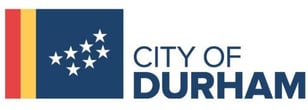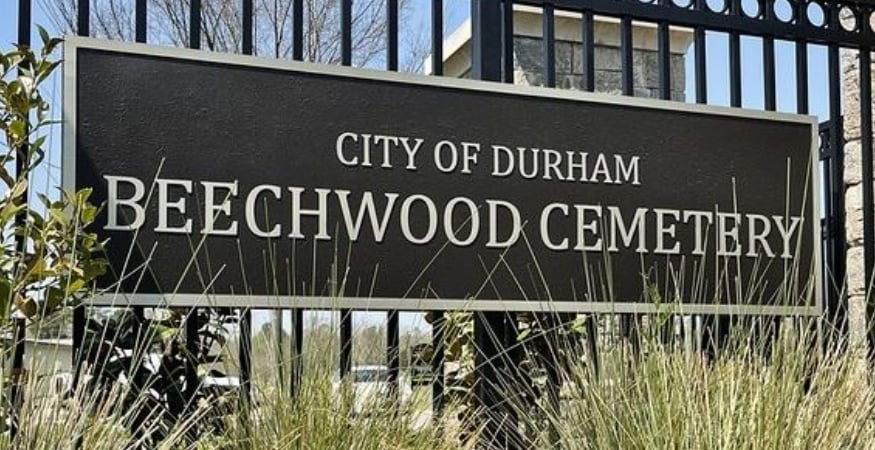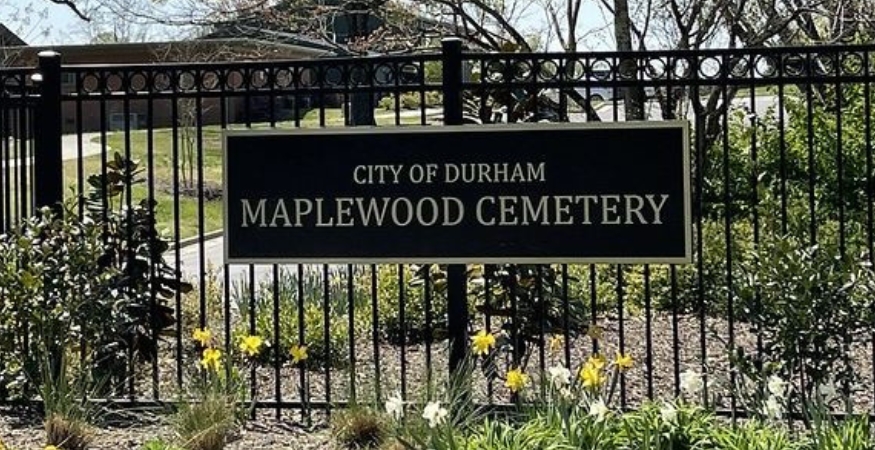| Read time: 6 mins

The City of Durham, a Municipality in North Carolina, operates two beautiful cemeteries, both offering traditional burial and cremation options.
In speaking with their local community, it was clear that digital transformation was a must-have to enable them to continue serving families in the best way possible, while streamlining their operations.
We spoke with Cemetery Administrator Brittany Fuller on how PlotBox’s cemetery management software solution is helping them to achieve that.
Tell us about your role and that of the Cemeteries Department with the City of Durham
Having started out as a tech, I’m now the Acting Administrator for our two cemeteries. That means running the day-to-day cemetery operations here at Durham - whether that's burials, selling plots, or dealing with the financial side of things.
Responsibility for our two cemeteries at Maplewood and Beechwood falls under the remit of the General Services Department - one of around 29 departments and offices within the city.
Overall responsibility for cemeteries sits with Business Services Division Manager Al Walker who leads a team that includes myself and Joseph Gallo, an intern working on the implementation of the Green Burial project. Green burials are something we’re looking into here for the city as a new initiative.
Tell us a little more about the cemeteries you operate
Maplewood is the larger of the two cemeteries, and comprises 120 acres of land. Many of Durham’s most prominent historical figures are buried here, such as Bartlett Durham, and has become well known for its beautiful views and landscape.
Beechwood occupies around 23 acres of land and was originally developed to consolidate overfilling and to accommodate what were then neglected black cemeteries in the city of Durham. In this way, it has interred notable African American business and community leaders, such as John Merrick, and C.C Spaulding.
We have burials at both locations daily, accommodating both at-need and pre-need sales.
As space is limited, we’re currently undertaking an expansion project to enable the community to purchase more plots.
That’s earmarked for completion by summer 2024, and should create at least 400 - 450 additional full body spaces. In reviewing our options for space, and in light of the growing popularity of cremations, we’re also creating a columbarium to house cremains.
The project grew from listening to the needs of the local community - Beechwood is much smaller than Maplewood, so there was a real need there for us to be able to provide plots for families well into the future. And we made it happen, so that’s very exciting.
What were some of the main challenges of using legacy systems and processes?
One of the main challenges was working with older paper records. Within the past 20 years we've had a good order of things, but prior to then, things weren't always kept as they should have been using paper records.
Even down to how we find graves - that can be a challenge when working with older, paper maps.
Another challenge we deal with would be the rigidity of old ordinance rules and dealing with the
aftermath of decisions made by previous administrations, which sometimes don't align with current needs and expectations. This can lead to misunderstanding and frustrations from our customers, which is something we're constantly working on to improve.
Aside from that, assisting members of the public with queries is more time consuming when having to refer to paper records. We’re talking about a cemetery that is over 120 years old - keeping up with that much paperwork can be a challenge.
At times, it can be like solving a mystery - finding all of the pieces and piecing them together.
Prior to PlotBox we used a data entry system that was due for an upgrade, in terms of our ability to retrieve and view records. As well as that we had (and still have) a card room here that includes some paper information from years ago.
But PlotBox has made that so much easier - we can literally go onto a computer and find the information we need - whether that’s lots, deeds or contracts.
Why was digital transformation a must have for your municipality?
At its heart, it was to enable us to serve our community in the best way possible. And key to that was finding a solution that would aid with the growing trend of genealogy searches, or people searching for the final resting places of loved ones.
That’s where PlotBox’s public grave search portal, Everafter, has been invaluable.
People would stop by the office and say, “Hey, I need to find my grandfather.” While we as employees understand map sections and PIN numbers, in general, many people don't.
So we needed a solution that would make it easier, not only for us to locate specific graves, but for customers or families coming to visit. With Everafter, you can literally put in the first and last name, and it gives you directions to that location.
That's great.

What were your key considerations during the data migration process and why?
In a word - testing. For example, we would find, let’s say, 3,000 names in our lot cards. We would then check that against the information that was being migrated into PlotBox.
From there, it was interesting to see what testing features PlotBox wanted us to carry out to make sure that the information was accurate.
Prior to going live, we were also able to use a learning site template - to go in and essentially play around. That allowed us to build our confidence without any fear of making mistakes.
On the learning site template - or sandbox - we could actually create contracts and get used to the steps that are involved. That was especially helpful, given that it was different to what we were used to.
It was a positive experience. At the beginning, we felt like it was going to be more [of a leap for us] than what it really was in practice - in effect it’s the same information, but in a much more accessible and easily manageable format.
You had both of your sites digitally mapped. How has that helped?
We had a team come on site to take high resolution drone images of both cemeteries. Those images were then overlaid onto our own existing maps to create digital maps that were then linked to our plot records. That means we can now easily find any plot with each cemetery and find its related information - all at the click of a button.
In terms of communicating with our grounds team, we can literally find a plot in seconds - whether it's looking at the amount of trees around it, or using other landmarks around the area you're looking for - that all helps to inform how and where work can take place.
And as I mentioned, with the expansion project, we're going to have that new area mapped out with PlotBox as well - so that's something I'm looking forward to.
How has PlotBox helped in terms of your day-to-day operations?
I’ll give you an example with regards to work orders - in the past, if a family called in and requested a marker or headstone lowered, we would literally have written it on paper. The work order would be handed to the grounds team and they would return it once the work had been completed.
There was no good way to track that piece of work without going through hundreds of work orders.
With PlotBox, the reporting function has made it so much easier, because I can literally go in, type in the name and find the exact work order.
The team now have iPads from which they can access PlotBox, meaning they can see exactly where work needs to be carried out, as well as find graves or plots much more easily. That saves time versus having to refer back and forth to paper maps in the office, and the mobility that provides has been great.
The team can now send the crew chief supervisor (Joel Cabrera) a photograph of the work carried out straight from their phone or iPad, which he will submit once he completes it.
That has made our processes much more efficient.
You touched on your Everafter grave search portal - can you tell us more about that?
Yes, that’s been a real benefit, not only for helping families to find loved ones, but also for people or groups who study genealogy.
With easy access to burial records, it makes it so much easier. Anyone can easily search for records and locations using basic criteria such as a name, a date of birth or date of death.
But to go back to families, with Everafter’s digital maps, they can see what's around the plot they’re looking for - a tall monument, for example, and use that to narrow down what they’re looking for.
Our families have been very happy with it.
What are some of the main benefits you’ve seen from using PlotBox?
I like how easy it works for us here at the City of Durham. Like I said, when we're out in the field, and need to find a person or a plot, we now literally have all of the information we need in the palm of our hands, without having to go back to the office.
That's what we like about it here - having all of the information we need in one place.
What has the support you’ve received from PlotBox been like?
Oh, amazing! We work closely with our Customer Success Manager, who is here in the US. If ever we have an issue, or a question, they’re always open to answering the questions - as are all of the support team, who we can contact using PlotBox’s in-app messenger without having to leave the system.
And finally, would you say to a municipality considering digitally transforming their cemetery operations?
I would definitely recommend PlotBox, it has made a significant difference in our operations, and
their support has been invaluable in helping us transition to this new digital system.
Discover why more municipalities are digital transforming their cemetery operations. Download our eBook today:

